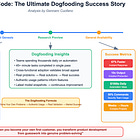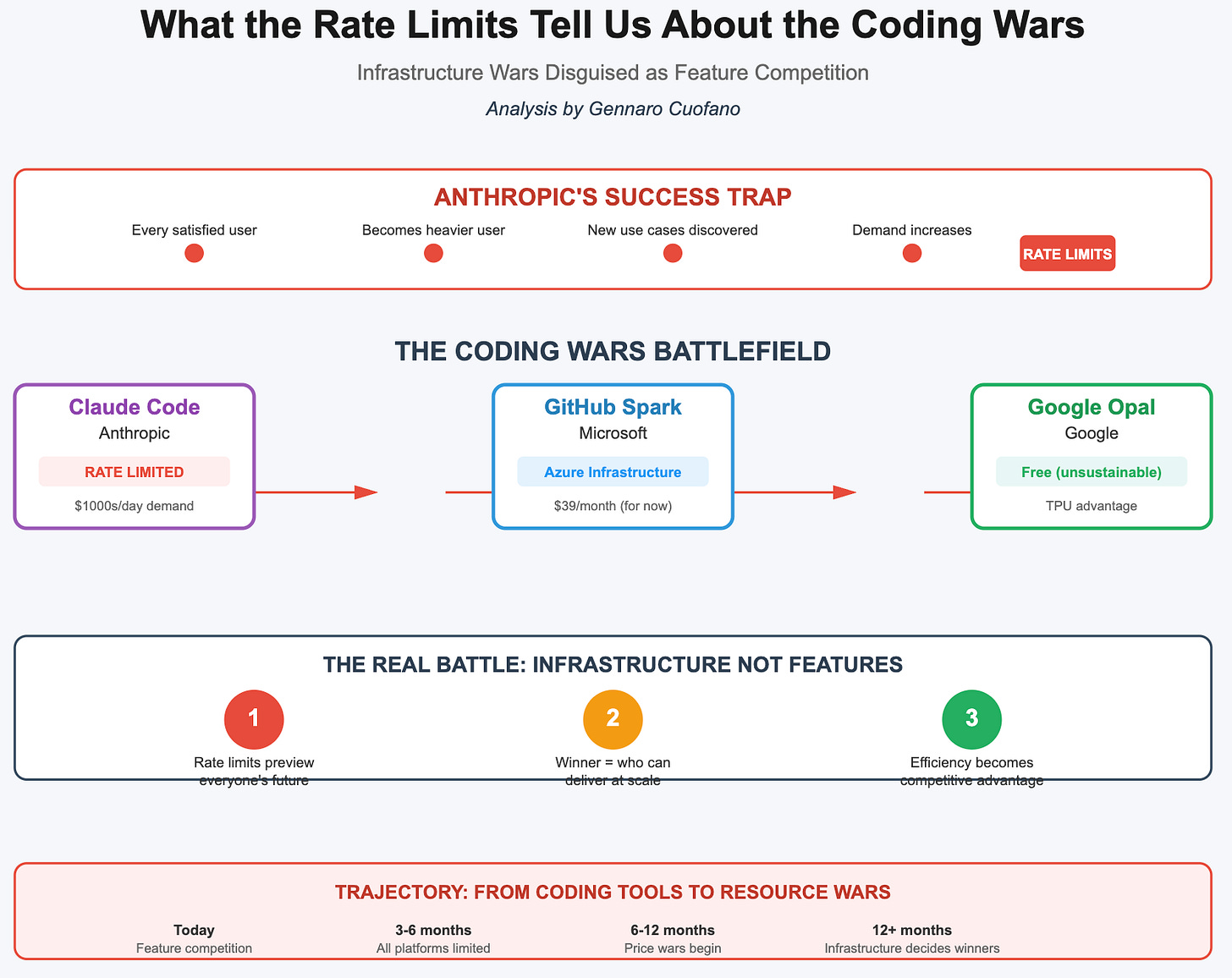Claude Code & The Canary in the AI Supply Coal Mine
And that is where the “human in the loop”-capable of examining that data point and understanding implications that are far deeper for the entire industry —becomes critical.
Indeed, that’s where we are today.
In a move that might signal the arrival of the AI supply crisis (or at least expose it in its entirety), Anthropic has implemented rate limits on Claude Code, their breakthrough "agentic coding tool that lives in your terminal and understands your entire codebase."
To be clear, Claude Code is the quintessence of what Agentic AI means, and really the “ChatGPT moment” for agentic AI.
Thus, if it’s already rate-limited, that is a huge signal for the overall market.
In short, I argue, this isn't just another product update; it's a preview of the constraints that will define the next phase of AI development.
The Claude Code Phenomenon: From Internal Tool to Market Sensation
What began as Anthropic's teams trying to understand their own product capabilities evolved into a tool that fundamentally changes how both developers and non-technical users create software.
The trajectory tells the story:
February 2025: Launched as "limited research preview" alongside Claude 3.7 Sonnet
May 2025: General availability after "extensive positive feedback"
July 2025: Rate limits implemented due to overwhelming demand
Why Rate Limits Matter: Reading the Demand Signals
The rate limits on Claude Code aren't a technical failure—they're a market signal.
When teams are "racking up like thousands of dollars a day" in automation costs and still hitting usage caps, we're witnessing something unprecedented in software history.
The Usage Patterns That Broke the System
Engineering Teams:
Claude Code team using their own product to build Claude Code itself
70% of Vim key bindings implementation came from Claude's autonomous work
Engineers prototyping "three versions" of solutions instead of writing design docs
Non-Technical Teams Going Supernova:
Legal Team: Built a predictive text app for speech disabilities in under an hour
Security Team: Reduced incident response from 15 to 5 minutes (67% improvement)
Marketing Team: 10x creative output, generating hundreds of ad variations in minutes
Design Team: 2-3x faster execution, making "large state management changes"
The Strategic Implications of Rate Limits
1. Proof of Product-Market Fit Beyond Doubt
Rate limits at premium pricing represent the ultimate validation. This isn't freemium users complaining about limits—these are enterprise teams paying significant amounts and still needing more. The constraint isn't willingness to pay; it's Anthropic's ability to serve.
2. The Generalist Agent Thesis Validated
Claude Code transcended its intended purpose as a coding tool. When legal teams are building apps and marketing teams are automating campaigns, you haven't built a coding assistant—you've built a generalist problem-solving agent. The rate limits reflect usage across every department, not just engineering.
3. Infrastructure Reality Check
The rate limits expose the brutal reality of AI scaling:
Training costs: One-time investment in model development
Inference costs: Ongoing, scaling with every user interaction
The multiplication problem: Success means exponentially growing inference demands





